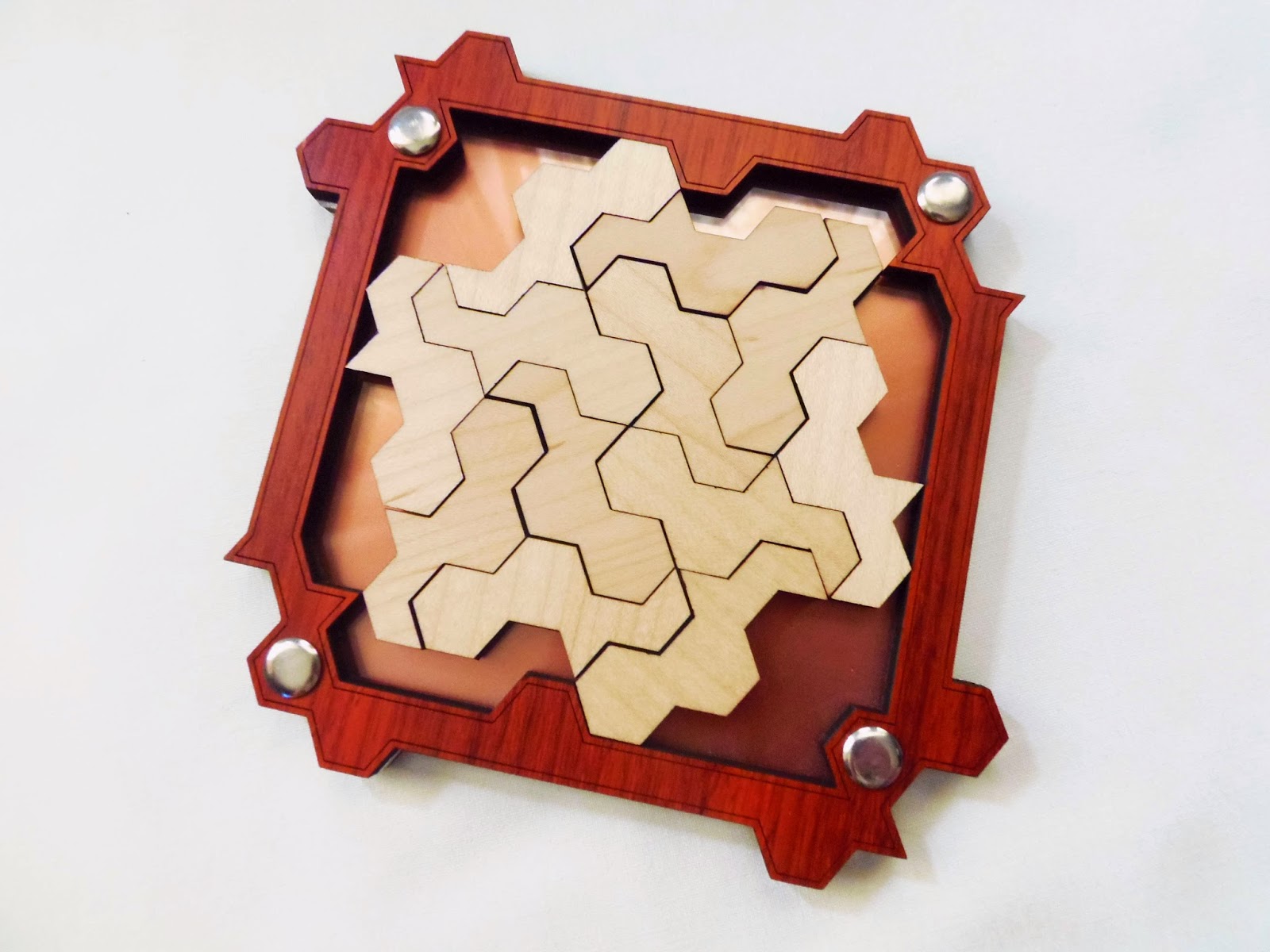4 Plaques
 |
| (Click to Enlarge) |
4 Plaques is an interesting puzzle from Jean Claude Constantin, very much different from the packing puzzles he usually makes. It's also not much of a surprise, since he often makes other kinds of puzzles, which is always welcome.
The name of the puzzle is self-explanatory. Four plaques with holes in different combinations are held in a cubic shape by four pieces with pegs (one peg in each of the four sides), and all of the pieces rest in a half-cube frame, which also features holes in its walls to fit the two plaques touching it. The goal is to take all the pieces apart and try to put them back to their cubic form. Classified as a level 8/10, this will be a little bit tricky once all the pieces are mixed up. Also, both the plaques and the pieces can be flipped and rotated, so it all adds up to a high number of positions.
 |
| (Click to Enlarge) |
The puzzle itself is very well built with natural wood (hence the higher price). The plaques have a darker tone whereas the square pieces have a more lighter color, giving it some contrast, so the puzzle doesn't appear as a cube of the same color. Note that the colors may vary from the pictures, as you can see from mine and PuzzleMaster's. The dimensions are just right, neither not too small nor too big, measuring 7x7cm (2.8").
Solving the puzzle may seem a bit intimidating at first, due to the different configurations of the plaques and the possible high number of combinations, but it's actually not that complicated. The idea is to go by a process of elimination. You should start by trying to fit the first piece with all four plaques around it. Bear in mind that sometimes more than one piece will fit in a 2-plaque configuration, so be prepared to make changes as you progress.
If you get stuck by the third or fourth piece, try to put a different piece at the bottom, and so forth. Since there's only four pieces, you shouldn't be looking at more than an hour's worth of puzzling. It took me about 20 minutes to solve it, and I never felt frustration kicking in. Once you have the plaques all in their positions you still have to place them correctly in the frame, but here you only to make a couple of rotations until it all fits.
Closing Comments:
Constantin's 4 Plaques is a nice change of pace from his 2D puzzles and presents a different kind of challenge. The quality, as always, is unquestionable and that will reflect on its price. It's nevertheless a great puzzle for any collector or serious puzzler.
Availability: The 4 Plaques puzzle is available from PuzzleMaster for about $40 CAD.Click here for more designs by Jean Claude Constantin.
Links:

































.jpg)


















